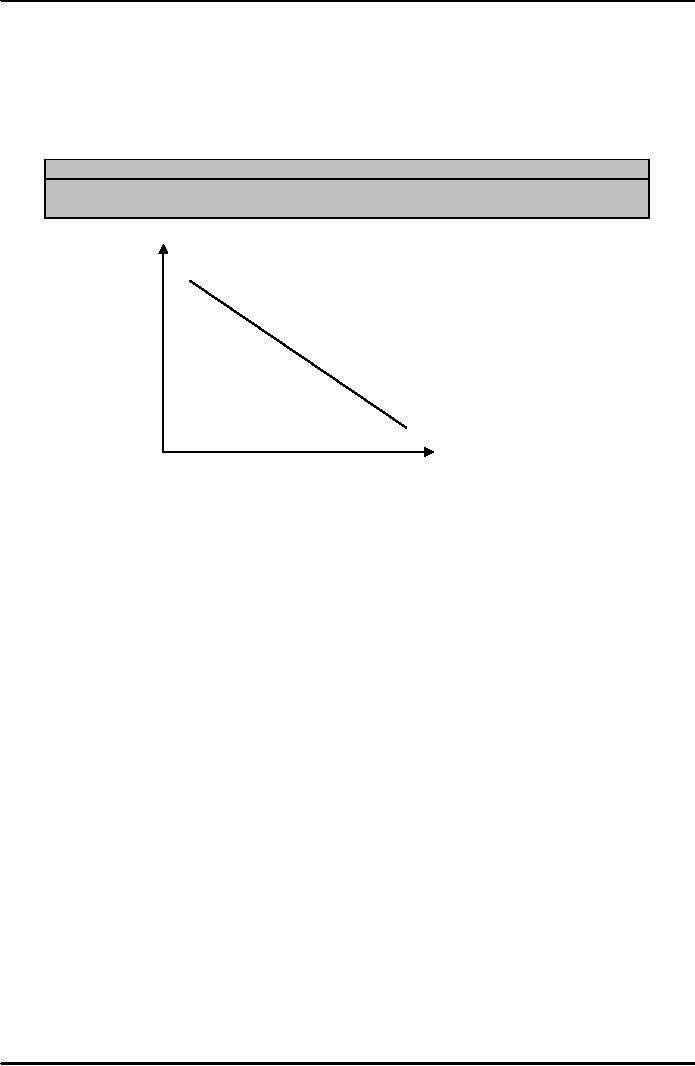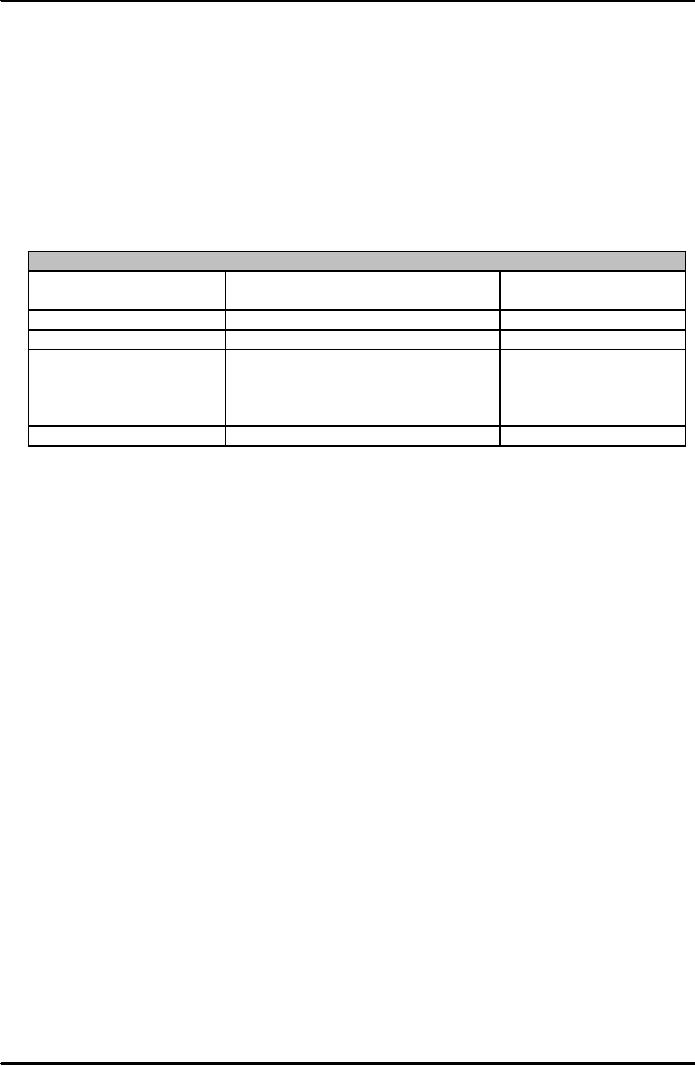 |
MONEY GROWTH, INFLATION, AND AGGREGATE DEMAND |
| << THE PORTFOLIO DEMAND FOR MONEY:Output and Inflation in the Long Run |
| DERIVING THE MONETARY POLICY REACTION CURVE >> |

Money
& Banking MGT411
VU
Lesson
40
MONEY
GROWTH, INFLATION, AND AGGREGATE
DEMAND
To
shift the focus to inflation, we need to
look at changes in the price
level.
Suppose
that inflation exceeds money
growth (with velocity held
constant).
Real
money
balances
will fall and so will
aggregate demand
Figure:
The Aggregate Demand Curve
At
higher level of inflation,
real money balances fall,
resulting in a lower level
of
aggregate
demand.
Inflation
(�)
Aggregate
Demand Curve
Output
(Y)
Because
real money balances fall at
higher levels of inflation,
resulting in a lower level
of
aggregate
demand, the aggregate demand
curve is downward
sloping.
Changes
in the interest rate also provide a
mechanism for aggregate
demand to slope down
Monetary
Policy and the Real Interest
Rate
Central
bankers control short-term nominal
interest rates by controlling the market
for reserves.
But
the economic decisions of households and firms depend
on the real interest rate;
To
alter the course of the economy,
central banks must influence
the real interest rate as well
In
the short run, because inflation is
slow to respond, when monetary
policymakers change
the
nominal
interest rate they change the real
interest rate.
The
real interest rate, then, is the lever
through which monetary
policymakers influence the
real
economy.
In
changing real interest rates,
they influence aggregate
demand.
Aggregate
Demand and the Real Interest
Rate
Aggregate
demand is divided into four
components:
Consumption,
Investment,
Government
purchases,
Net
exports
Aggregate
Govt.'s Net Demand = Consumption +
Investment + Purchases +
Exports
Yad
= C + I + G + NX
It
is helpful to think of aggregate
demand as having two parts,
one that is sensitive to real
interest
rate changes and one that is
not
Investment
is the most important of the components
of aggregate demand that are
sensitive to
changes
in the real interest rate.
125

Money
& Banking MGT411
VU
An
investment can be profitable
only if its internal rate of
return exceeds the cost of
borrowing
Consumption
and net exports also respond to the real
interest rate;
Consumption
decisions often rely on borrowing,
and the alternative to consumption is
saving
(higher
rates mean more
saving).
As
for net exports, when the real interest
rate in a country rises, her financial
assets become
attractive
to foreigners, causing local
currency to appreciate, which in turn
means more imports
and
fewer exports (lower net
exports)
While
changes in real interest rate may have an
impact on the government's budget by
raising
the
cost of borrowing, the effect is
likely to be small and
ignorable.
Thus,
considering consumption, investment, and
net exports, an increase in the real
interest rate
reduces
aggregate demand (the effect
on the 4th component, government spending, is
small
enough
to be ignored).
Impact
of rise in the Real interest
rate on Components of Aggregate
Demand
Components
of
Effect
of a rise in the real
interest
Impact
on component
Aggregate
Demand
rate
of
Aggregate Demand
Consumption
(C)
Reward
to saving rises
Consumption
falls
Investment
(I)
Cost
of financing rises
Investment
falls
Net
Exports (NX)
Demand
for domestic assets
rises,
Exports
fall; imports
causing
a currency appreciation,
rises;
net exports fall
raising
the price of exports and
reducing
the cost of imports
Aggregate
Demand (Yad)
C,
I and
NX
all
fall
Aggregate
demand falls
The
Long-Run Real Interest Rate
There
must be some level of the
real interest rate at which aggregate
demand equals
potential
output;
this is the long-run real interest
rate.
The
long-run real interest rate equates
aggregate demand with
potential output.
The
rate will change if a component of
aggregate demand that is not
sensitive to the real interest
rate
goes up (or down) or if
potential output
changes.
For
example, an increase in government
purchases (all else held
constant) will raise
aggregate
demand
at every level of the real interest
rate.
To
remain in equilibrium, one of the
interest-sensitive components of
aggregate demand must
fall,
and for that to happen, the long-run
real interest rate must rise.
The
same would be true for
increases in other components of
aggregate demand that are
not
interest
sensitive.
A
change in potential output
has an inverse effect on the
long-run real interest rate;
When
potential output rises,
aggregate demand must rise
with it, which requires a
decrease in
the
real interest rate
Inflation,
the Real Interest Rate, and the
Monetary Policy Reaction
Curve
Policymakers
set their short-run nominal
interest rate targets in response to economic
conditions
in
general and inflation in
particular.
When
current inflation is high or
current output is running above
potential output,
central
bankers
will raise nominal interest
rates; when current
inflation is low or current
output is well
below
potential, they will lower
interest rates
While
they state their policies in
terms of nominal rates they
do so knowing that changes in
the
nominal
interest rate will eventually translate
into changes in the real interest rate,
and it is those
changes
that influence the economic decisions of
firms and households
Experts
agree that any (coherent)
monetary policy can be
written as an inflation target
plus a
response
to supply shocks
126
Table of Contents:
- TEXT AND REFERENCE MATERIAL & FIVE PARTS OF THE FINANCIAL SYSTEM
- FIVE CORE PRINCIPLES OF MONEY AND BANKING:Time has Value
- MONEY & THE PAYMENT SYSTEM:Distinctions among Money, Wealth, and Income
- OTHER FORMS OF PAYMENTS:Electronic Funds Transfer, E-money
- FINANCIAL INTERMEDIARIES:Indirect Finance, Financial and Economic Development
- FINANCIAL INSTRUMENTS & FINANCIAL MARKETS:Primarily Stores of Value
- FINANCIAL INSTITUTIONS:The structure of the financial industry
- TIME VALUE OF MONEY:Future Value, Present Value
- APPLICATION OF PRESENT VALUE CONCEPTS:Compound Annual Rates
- BOND PRICING & RISK:Valuing the Principal Payment, Risk
- MEASURING RISK:Variance, Standard Deviation, Value at Risk, Risk Aversion
- EVALUATING RISK:Deciding if a risk is worth taking, Sources of Risk
- BONDS & BONDS PRICING:Zero-Coupon Bonds, Fixed Payment Loans
- YIELD TO MATURIRY:Current Yield, Holding Period Returns
- SHIFTS IN EQUILIBRIUM IN THE BOND MARKET & RISK
- BONDS & SOURCES OF BOND RISK:Inflation Risk, Bond Ratings
- TAX EFFECT & TERM STRUCTURE OF INTEREST RATE:Expectations Hypothesis
- THE LIQUIDITY PREMIUM THEORY:Essential Characteristics of Common Stock
- VALUING STOCKS:Fundamental Value and the Dividend-Discount Model
- RISK AND VALUE OF STOCKS:The Theory of Efficient Markets
- ROLE OF FINANCIAL INTERMEDIARIES:Pooling Savings
- ROLE OF FINANCIAL INTERMEDIARIES (CONTINUED):Providing Liquidity
- BANKING:The Balance Sheet of Commercial Banks, Assets: Uses of Funds
- BALANCE SHEET OF COMMERCIAL BANKS:Bank Capital and Profitability
- BANK RISK:Liquidity Risk, Credit Risk, Interest-Rate Risk
- INTEREST RATE RISK:Trading Risk, Other Risks, The Globalization of Banking
- NON- DEPOSITORY INSTITUTIONS:Insurance Companies, Securities Firms
- SECURITIES FIRMS (Continued):Finance Companies, Banking Crisis
- THE GOVERNMENT SAFETY NET:Supervision and Examination
- THE GOVERNMENT'S BANK:The Bankers' Bank, Low, Stable Inflation
- LOW, STABLE INFLATION:High, Stable Real Growth
- MEETING THE CHALLENGE: CREATING A SUCCESSFUL CENTRAL BANK
- THE MONETARY BASE:Changing the Size and Composition of the Balance Sheet
- DEPOSIT CREATION IN A SINGLE BANK:Types of Reserves
- MONEY MULTIPLIER:The Quantity of Money (M) Depends on
- TARGET FEDERAL FUNDS RATE AND OPEN MARKET OPERATION
- WHY DO WE CARE ABOUT MONETARY AGGREGATES?The Facts about Velocity
- THE FACTS ABOUT VELOCITY:Money Growth + Velocity Growth = Inflation + Real Growth
- THE PORTFOLIO DEMAND FOR MONEY:Output and Inflation in the Long Run
- MONEY GROWTH, INFLATION, AND AGGREGATE DEMAND
- DERIVING THE MONETARY POLICY REACTION CURVE
- THE AGGREGATE DEMAND CURVE:Shifting the Aggregate Demand Curve
- THE AGGREGATE SUPPLY CURVE:Inflation Shocks
- EQUILIBRIUM AND THE DETERMINATION OF OUTPUT AND INFLATION
- SHIFTS IN POTENTIAL OUTPUT AND REAL BUSINESS CYCLE THEORY